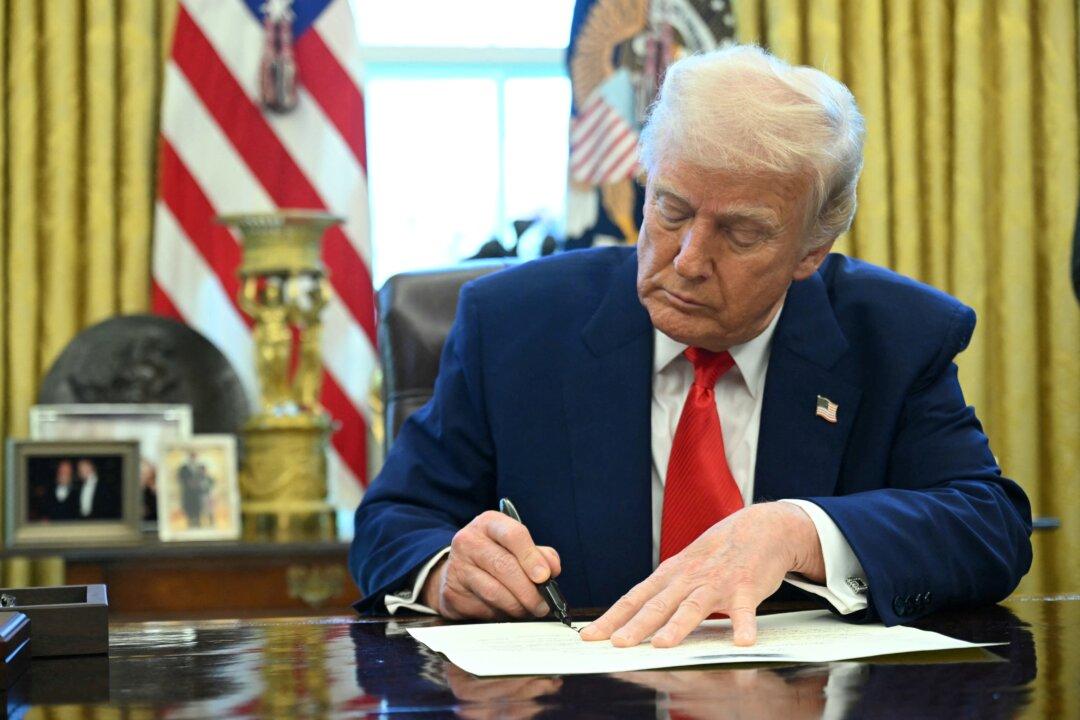The United States has urged North Korea to engage in “serious negotiations” after the North Korean regime launched a spy satellite into orbit on Nov. 21.
KCNA said in a subsequent report that North Korean leader Kim Jong Un received aerospace images of major U.S. military bases in Guam from a spy satellite. The photos were taken at around 9:21 a.m. local time on Nov. 22.
According to KCNA, Mr. Kim reviewed aerospace photos of Anderson Air Force Base, Apra Harbor, and other U.S. military bases taken from the skies over Guam in the Pacific.
During the review, Mr. Kim urged North Korea’s armed forces to “operate more reconnaissance satellites” in order to enhance the effectiveness of the country’s “military strike means,” the report stated.
The spy satellite is expected to begin its formal reconnaissance mission on Dec. 1 after completing “a detailed piloting process,” which could take up to seven to 10 days, according to KCNA.
National Security Council spokesperson Adrienne Watson said that President Joe Biden and his national security team are assessing the situation in close coordination with U.S. allies and partners.
The United States called on all countries to condemn North Korea’s illegal space launch and urged the North Korean regime to return to “serious negotiations,” Ms. Watson said in a statement.
“The door has not closed on diplomacy, but Pyongyang must immediately cease its provocative actions and instead choose engagement,” the spokesperson stated.
“The United States will take all necessary measures to ensure the security of the American homeland and the defense of our Republic of Korea and Japanese allies,” she added.
North Korea said the launch demonstrated its “legitimate right” to improve self-defense capability and ramp up “war preparedness” in response to what it viewed as “enemies’ dangerous military moves.”
‘Extremely Problematic Act’

Japan has strongly condemned the launch, calling it “an extremely problematic act.”
“This is a serious issue affecting the safety of the people. Japan has lodged a strong protest against North Korea and condemned it in the strongest terms,” Japan’s Defense Ministry said.
According to the ministry, the projectile disintegrated into pieces, one of which landed in the Pacific Ocean about 1,200 kilometers (746 miles) southwest of Japan’s Okinotori Island.
Another part of the projectile fell into the East China Sea, around 350 kilometers (217 miles) off the Korean Peninsula.
“Further details are currently being analyzed, but at this time, no satellites have been confirmed to enter orbit,” it stated.
Meanwhile, South Korea’s military said it assessed that North Korea’s satellite entered orbit but that more analysis and time are needed to determine whether it is functioning properly.
“After a comprehensive analysis of its flight path and other signs, the satellite is assessed to have entered into orbit,” South Korea’s Joint Chiefs of Staff told reporters, Yonhap News Agency reported.
South Korea has partially suspended a 2018 inter-Korean agreement with North Korea, allowing it to restore South Korea’s reconnaissance and surveillance operations along the demilitarized zone separating the two countries.
“North Korea is clearly demonstrating that it has no will to abide by the Sept. 19 military agreement designed to reduce military tension on the Korean Peninsula and to build trust,” Prime Minister Han Duck-soo said.

Mr. Kim has said that having an operational military reconnaissance satellite would be crucial for North Korea to cope with the “most hostile rhetoric and explicit action” by the United States and South Korea.
North Korea first attempted to launch a satellite on May 31, which ended up plunging into the sea. The country then sought to make a second attempt on Aug. 24 but failed again after the rocket booster experienced a problem with its third stage.







